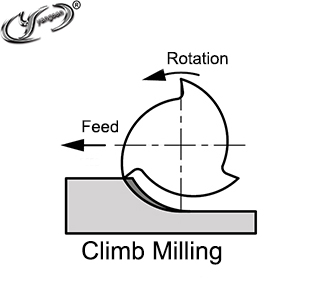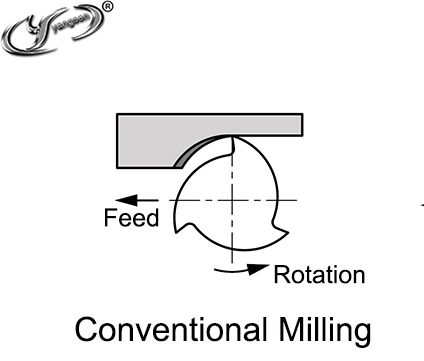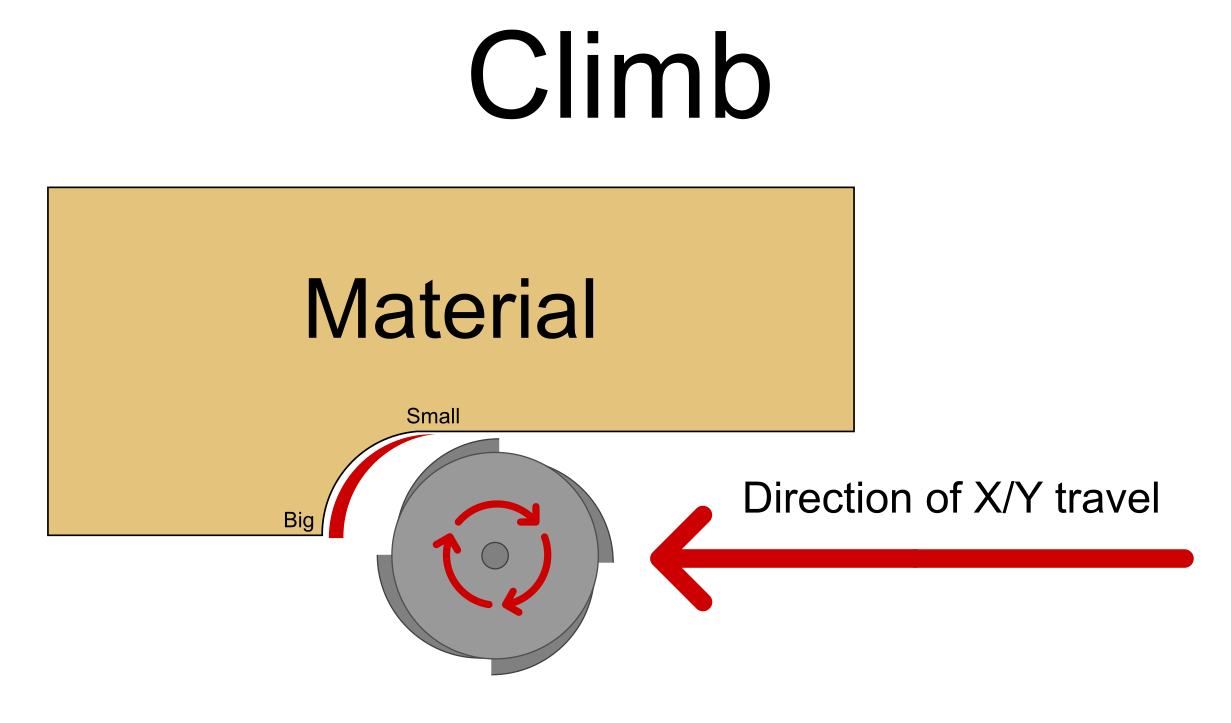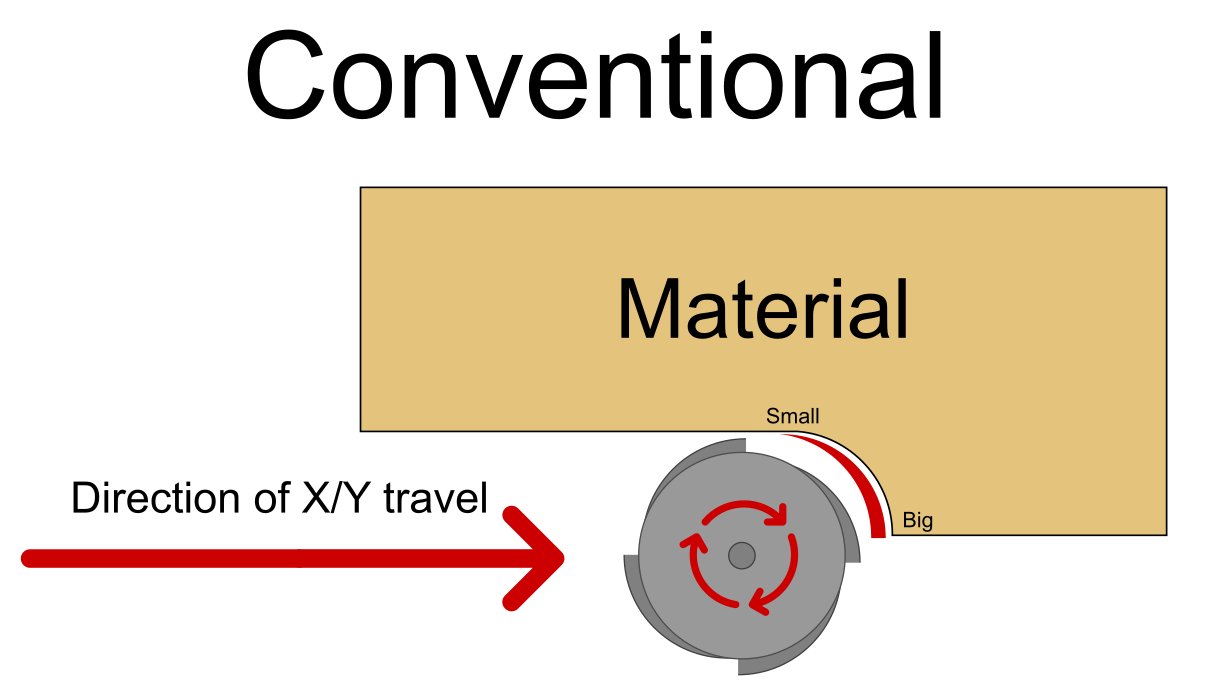In the domain of machining, where precision and efficiency reign supreme, the choice between different techniques can significantly impact the outcome of the process. One such pivotal decision revolves around the selection of milling techniques. Climb milling and conventional milling stand as the two primary contenders in this arena. As we delve into the depths of these techniques, we unveil the intricacies that govern their operation, understand their advantages and disadvantages, explore factors influencing their selection, and analyze real-world performance comparisons.
At its core, milling is a material removal process that involves the removal of unwanted material from a workpiece to attain the desired or required shape and dimensions. The technique chosen for this purpose plays a pivotal role in shaping the final outcome. Milling techniques can broadly be categorized into two camps: climb milling and conventional milling. These techniques are characterized by their distinct cutting strategies and the resultant forces they impose on the workpiece.
Climb milling, also known as "up milling" or "opposite direction milling," involves the rotation of the cutting tool against the direction of the workpiece's movement. In this technique, the cutter engages the material at the thickest point and gradually reduces the depth of cut as it progresses. The mechanism is akin to a "climbing" action, where the tool advances into the material against its motion.

In climb milling, the cutting forces push the workpiece into the fixturing or table, minimizing tool deflection and chatter. This leads to reduced stress on the tool, extending its lifespan. As the cutting forces are directed into the workpiece, tool wear and breakage are significantly mitigated, resulting in fewer tool replacements and enhanced cost-effectiveness.
Climb milling's smoother cutting action generates finer chips and reduces the propensity for built-up edge formation. This, in turn, leads to an improved surface finish of the machined component. Industries that demand exceptional surface quality, such as aerospace and medical manufacturing, find climb milling particularly advantageous.
The controlled cutting action of climb milling minimizes chatter and vibration, enhancing machining accuracy and overall workpiece quality. In high-precision applications where tolerances are tight and dimensional accuracy is paramount, the advantages of reduced vibration are indispensable.
The elimination of backlash in climb milling permits higher feed rates, facilitating increased material removal rates. This results in heightened productivity and operational efficiency, making climb milling an optimal choice for industries that demand rapid material removal, such as automotive and heavy machinery manufacturing.
With the directed cutting forces minimizing workpiece movement, climb milling significantly reduces the energy expended on overcoming workpiece inertia. This translates into lower power consumption, contributing to energy-efficient manufacturing practices.
Conventional milling, also referred to as "down milling" or "same direction milling," entails the rotation of the cutting tool in the same direction as the workpiece's movement. Here, the cutter enters the material at its thinnest point and incrementally increases the depth of cut as it progresses. The cutting action resembles a "retreating" motion, where the tool pulls away from the material's path.

The visibility of the cutting area is a distinct advantage in conventional milling. As the cutter's movement aligns with the workpiece's motion, operators have improved visibility of the cutting process. This makes conventional milling particularly suitable for intricate geometries and precision machining.
Conventional milling's initial cutting action involves lower forces compared to climb milling. This results in reduced chances of workpiece movement or displacement during the initial engagement. For delicate workpieces or situations where fixturing options are limited, conventional milling offers added stability.
The gradual entry into the material characteristic of conventional milling minimizes the risk of tool breakage, especially when working with brittle materials or intricate geometries. This gradual approach ensures that the tool effectively penetrates the material without inducing stress concentrations that might lead to fractures.
Conventional milling generates less heat due to the intermittent cutting action. This is particularly advantageous when working with materials prone to thermal damage, such as plastics and composites. By mitigating heat-related issues, conventional milling preserves material integrity and dimensional accuracy.
The choice between climb milling and conventional milling isn't arbitrary; it's a nuanced decision influenced by several factors. Among these factors, three key aspects exert considerable influence:
The properties of the workpiece material play a crucial role in determining the optimal milling technique. Hard, brittle materials may benefit from the gradual entry of conventional milling to prevent tool breakage, while softer materials could leverage the advantages of reduced tool wear in climb milling.
The cutting tool's geometry, material composition, and coating impact the choice of milling technique. Tools designed to withstand the forces of climb milling or leverage the advantages of conventional milling enhance the efficiency and precision of the machining process.
The rigidity and stability of the milling machine are pivotal in determining which technique can be effectively employed. Modern machining centers designed with enhanced rigidity can harness the benefits of climb milling, whereas less rigid setups may lean towards conventional milling.
In the realm of practical application, the decision between climb milling and conventional milling hinges on the unique characteristics of the machining task at hand. Here are scenarios where each technique excels:
Industries requiring rapid material removal, such as heavy machinery manufacturing and automotive production, benefit from climb milling's ability to facilitate higher feed rates and efficient chip evacuation.
For components destined for aerospace, medical devices, or high-end consumer electronics, climb milling's propensity for generating finer chips and reducing built-up edge formation ensures a superior surface finish.

Delicate materials prone to fracture, like ceramics and glass, find their match in conventional milling's gradual engagement strategy. Similarly, components with intricate geometries that demand enhanced visibility benefit from the retreating motion of conventional milling.
In cases where robust workpiece fixturing options are limited, conventional milling provides added stability during the initial engagement due to its lower initial cutting forces.

When selecting between climb milling and conventional milling, a comprehensive evaluation of their performances is imperative. Each technique comes with distinct advantages and limitations, impacting machining outcomes significantly. Below is an in-depth comparison of their performances across various features:
One of the fundamental distinctions lies in the cutting direction. Climb milling involves the cutter rotating in the same direction as the workpiece movement, whereas conventional milling adopts a cutter rotation opposite to the workpiece motion.
In terms of surface finish, climb milling tends to yield superior results. This is attributed to its reduced propensity for built-up edge formation and finer chip generation, resulting in a smoother and more refined surface on the machined component.
Tool life is a critical consideration, and climb milling holds a significant advantage in this regard. Tools used in climb milling tend to last longer due to diminished wear and reduced tool deflection. This longevity not only reduces tool replacement frequency but also enhances cost-effectiveness.
Friction and heat generation play a crucial role in machining. Climb milling excels by generating less friction and heat compared to conventional milling. The controlled cutting action and minimized tool deflection contribute to lower heat accumulation, mitigating the risk of thermal damage to both the workpiece and the cutting tool.
Vibration during machining is another critical parameter. Climb milling's smoother cutting action translates into reduced vibration, enhancing machining accuracy and overall workpiece quality, especially in applications where tight tolerances are imperative.
While climb milling offers various advantages, its controllability is more demanding. The initial tendency of the tool to pull into the workpiece requires meticulous setup and fixturing to mitigate. In contrast, conventional milling offers greater ease of control, particularly during the initial engagement.
Regarding material suitability, climb milling demonstrates versatility, effectively accommodating both hard and soft materials. This versatility makes it a preferred choice for a wide spectrum of machining tasks. Conversely, conventional milling is better suited for hard materials, as its gradual entry into the workpiece is more suitable for these materials.
Considering the risk of workpiece pull-in, climb milling presents a reduced threat. Proper fixturing and setup techniques substantially mitigate the risk, rendering it suitable for thin workpieces and delicate components.
Finally, the choice between the two techniques depends on the specific machining operation. Climb milling finds its strength in finishing operations, particularly for hard materials and thin workpieces. On the other hand, conventional milling is well-suited for roughing operations involving soft materials and thick workpieces.
|
Feature |
Climb Milling |
Conventional Milling |
|
Cutting direction |
Cutter rotates in the direcrion exactly same as the workpiece |
Cutter rotates in the opposite direction as the workpiece |
|
Surface finish |
Better |
Worse |
|
Tool life |
Longer |
Shorter |
|
Friction and heat |
Less |
More |
|
Vibration |
Less |
More |
|
Controllability |
More difficult |
Easier |
|
Suitability for materials |
Hard and soft materials |
Hard materials only |
|
Risk of workpiece pull-in |
Less |
More |
|
Recommended for |
Finishing operations, hard materials, thin workpieces |
Roughing operations, soft materials, thick workpieces |
Before making a concluding call on the two types of milling, it is better to weigh the advantages and disadvantages of the two forms of milling.
· Produces a better surface finish: The chips are pushed away from the cutter, which helps to reduce friction and heat. This also helps to improve tool life.
· Improves tool life: The reduced friction and heat helps to extend the life of the cutting tool.
· Reduces friction and heat: The chips are pushed away from the cutter, which helps to reduce friction and heat. This also helps to improve tool life.
· Less vibration: The chips are pushed away from the cutter, which helps to reduce vibration. This can be a problem for delicate workpieces or workpieces that are made from thin materials.
· Less likely to cause the workpiece to pull towards the cutter: The cutting forces are more evenly distributed, which helps to prevent the workpiece from being pulled towards the cutter.
· Easier to control: The cutting forces are more evenly distributed, which makes it easier to control the machine.
· Suitable for a wider range of materials: Conventional milling can be used for both hard and soft materials.
· Can be utilized for both roughing and finishing operations: Conventional milling can be used for both roughing and finishing operations, depending on the desired surface finish.
· Can be more difficult to control: The workpiece can be pulled towards the cutter, which can cause the tool to wander.
· Not suitable for all materials: Climb milling should not be used for materials that are very hard or brittle, as it can cause the workpiece to chip or crack.
· Produces a worse surface finish: The chips are pulled towards the cutter, which can increase friction and heat. This also shortens tool life.
· Shorter tool life: The increased friction and heat can shorten the life of tool.
· Increased friction and heat: The chips are pulled towards the cutter, which can increase friction and heat. This can also cause the workpiece to vibrate.
· More vibration: The chips are pulled towards the cutter, which can cause the workpiece to vibrate. This can be a problem for delicate workpieces or workpieces that are made from thin materials.
· More likely to cause the workpiece to vibrate: The increased friction and vibration can cause the workpiece to vibrate. This can be a problem for delicate workpieces or workpieces that are made from thin materials.
While the advantages of each technique are clear, safety remains a critical consideration. Both climb milling and conventional milling come with their unique safety considerations:
Climb milling's propensity for directing cutting forces into the workpiece enhances its advantages but demands heightened vigilance. Operators must ensure secure fixturing and closely monitor the process to prevent excessive workpiece movement and potential collisions.
Conventional milling's lower initial cutting forces provide stability but require careful consideration during the entry into the material. Operators should ensure the tool is adequately engaged to prevent workpiece displacement.
In the intricate domain of milling, the choice between climb milling and conventional milling dictates the rhythm of the process. Both techniques have their merits and pitfalls, and the optimal choice depends on a plethora of factors ranging from material properties to machining precision requirements. By mastering the intricacies of each technique and aligning them with the nuances of your machining needs, you can ensure the successful execution of machining tasks that meet the highest standards of efficiency, accuracy, and quality.